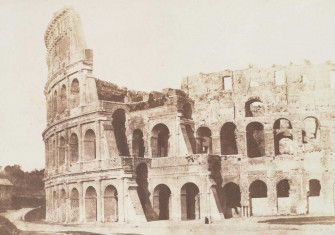Rome, Zombie City
Surveying history’s various attempts to rehydrate Rome’s ‘desiccated corpse’.

Rarely has the story of one city’s misfortunes and an empire’s collapse so neatly coincided as on 29 May 1453 at Constantinople. An invading Ottoman army had spent the previous year erecting forts along the Bosporus to deter the city’s allies from supplying aid. By April, bombardments commenced. One month later, Emperor Constantine XI died in battle defending his Roman namesake’s capital.
Poets had rhapsodised that the Romans would govern for an eternity. At Constantine’s demise, the eastern Roman Empire, little more than a quarter-moon of Mediterranean territory, drew its last breath. What happened next, to hear Edward J. Watts tell it in The Eternal Decline and Fall of Rome – a learned survey of the rhetoric of moral decline within political discourse from Rome’s Republic to the present – was a host of zombie-like encounters with classical antiquity, as statesmen and thinkers, from Montesquieu to Mussolini, scrambled to ‘rehydrate’ Rome’s desiccated corpse.
Within two generations one of the most powerful monarchs in 16th-century Europe, the Habsburg scion Maximilian I, reared on stories of Caesar and Augustus’ military valour, drew up plans to recapture the city. No less a talent than Albrecht Dürer drafted a set of engravings for a triumphal arch, replete with dead Caesars, to celebrate Constantinople’s imminent, though never-realised, retaking – what Watts calls the Habsburg family’s multi-generational ‘desperate dream’.
Fans of whirlwind histories that chase a common theme across time, like the capacious storytelling behind Matthew Kneale’s Rome: A History in Seven Sackings, will appreciate Watts’ narrative. From Cato’s grumpy moralising to the first Constantine’s revolution, the book dips into different eras and spins colourful vignettes about world history into an argument about Rome’s enduring legacy. The pace, akin to racing through a museum with an over-enthusiastic guide, is a touch too quick.
But in an inspired bit of cutting and pasting, Watts, an endowed chair of history with a formidable reputation as a scholar of the Greek-speaking Christian Roman Empire, has removed most references to the artificial construct ‘Byzantium’. This clever conceit leaves readers with the far more compelling portrait of an ageing ‘Rome’ that limps and lingers on, from the sixth to the 15th centuries, as its empire spectacularly unravels. It also nicely suits Giuseppe Mazzini’s idea, acknowledged at Italy’s birth in 1848, that Rome has always been akin to ‘the verb of history’.
At the intellectual core of The Eternal Decline and Fall of Rome sits Watts’ assertion that 1453 spawned a ‘dangerous idea’ when Rome, ‘no longer a living polity’, became ‘a powerful metaphor to speak about the present’. Since then, Watts writes, crafty thinkers have drawn upon ‘the same basic rhetoric’ of decline and renewal ‘used by Sulla, Augustus, Justinian, Charlemagne, Michael Palaeologus, and Charles V’ to advocate for a return to supposedly traditional values. The book’s framing, with essays on the disappointing proliferation of anti-immigrant rhetoric in US politics, anti Muslim diatribes in contemporary Spain and the weaponising of fears about homosexuality and gay marriage, underscores Watts’ point that repeated appeals to a bygone era of supposed greatness form part of a pattern that has left its own ‘trail of victims’.
Yet while his book has the good fortune of landing just as the subject of Rome’s fall inspires spirited public debate, its own presentation of the fragmentation of Rome’s western empire, traditionally attributed to developments involving the Goths and Vandals in the fifth century AD, rings hollow. Key ingredients in Rome’s ruin, like the xenophobia that led to the murder of Goths in one of Constantinople’s churches, or the rising influence of religious fanatics on the legal history of the empire, or Rome’s decision to build towering walls to protect its Eternal City from invasion – not to mention the many twists and turns that accompanied the evolution of the empire’s policy to cease extending citizenship to foreigners – are relevant episodes left unaddressed. All unfolded amid the Romans’ anxieties about the health, resilience and future of their society.
History offers a stockpile of indisputably dangerous ideas, though many also go unmentioned in the book: the fictional, antisemitic conspiracies at the heart of the Protocols of the Elders of Zion; the latent theories of northern European racial superiority that lay dormant in Tacitus’ Germania until the Nazis mined them for twisted purposes. The Book of Revelation, whose potent images about the end of the world divided early Christians about whether it belonged in the Bible, offers its own fraught metaphor about Rome, ‘the whore of Babylon’, whose toppling was predicted in the first century AD as a panacea for religious grievances and persecutions, some real, some imaginary. To blame a secular obsession with the story of an empire’s literal fall for stoking the rise of noxious rhetoric and exclusionary policies centuries later not only strains credulity. It defies belief.
The Eternal Decline and Fall of Rome: The History of a Dangerous Idea
Edward J. Watts
Oxford University Press 296pp £21.99
Buy from bookshop.org (affiliate link)
Douglas Boin is a professor of history at Saint Louis University and the author of Alaric the Goth: An Outsider’s History of the Fall of Rome (W.W. Norton, 2019).






